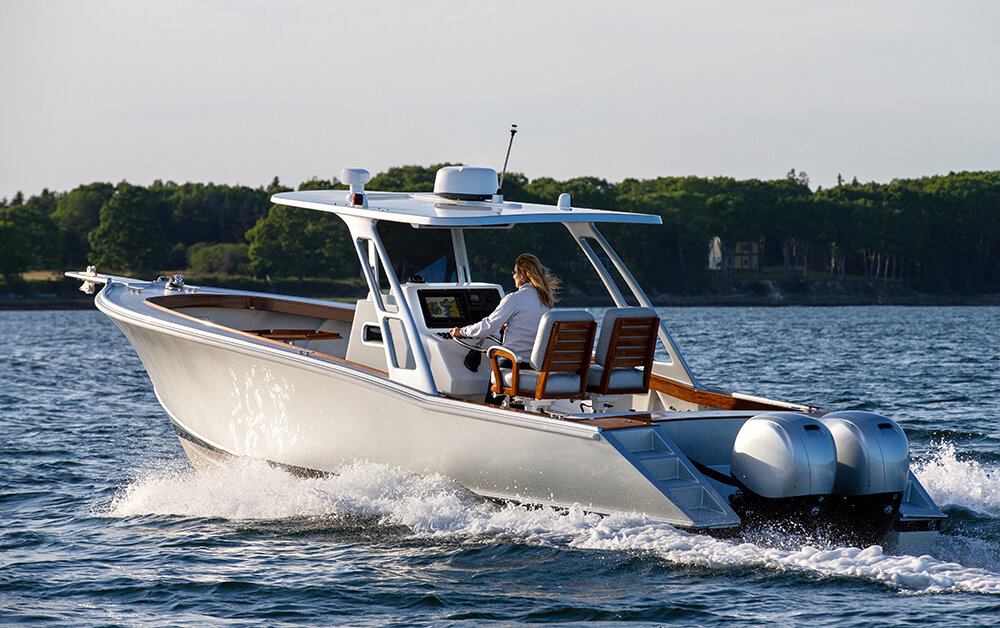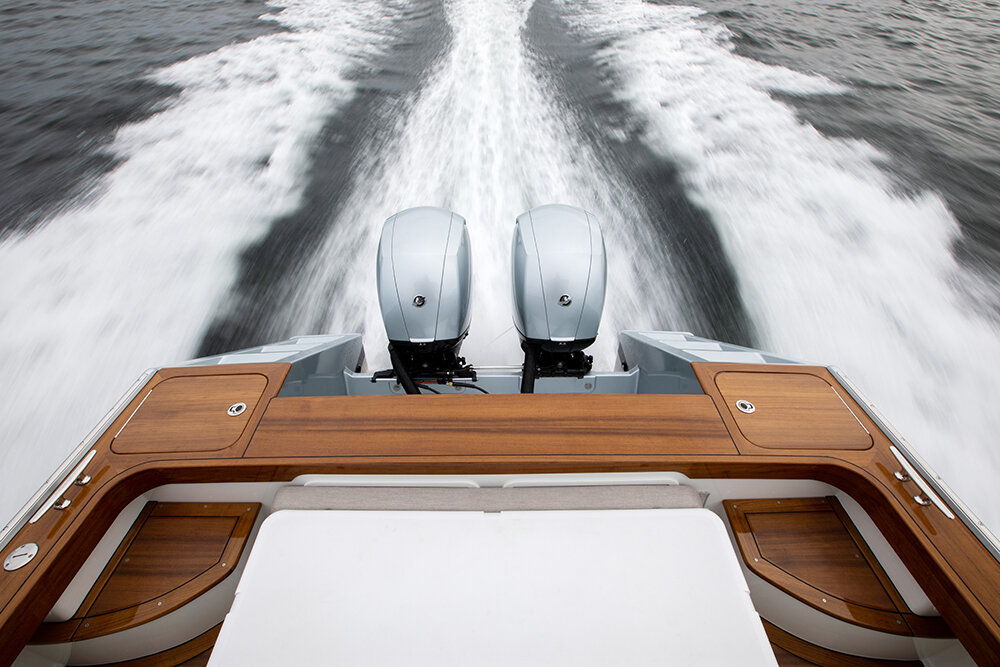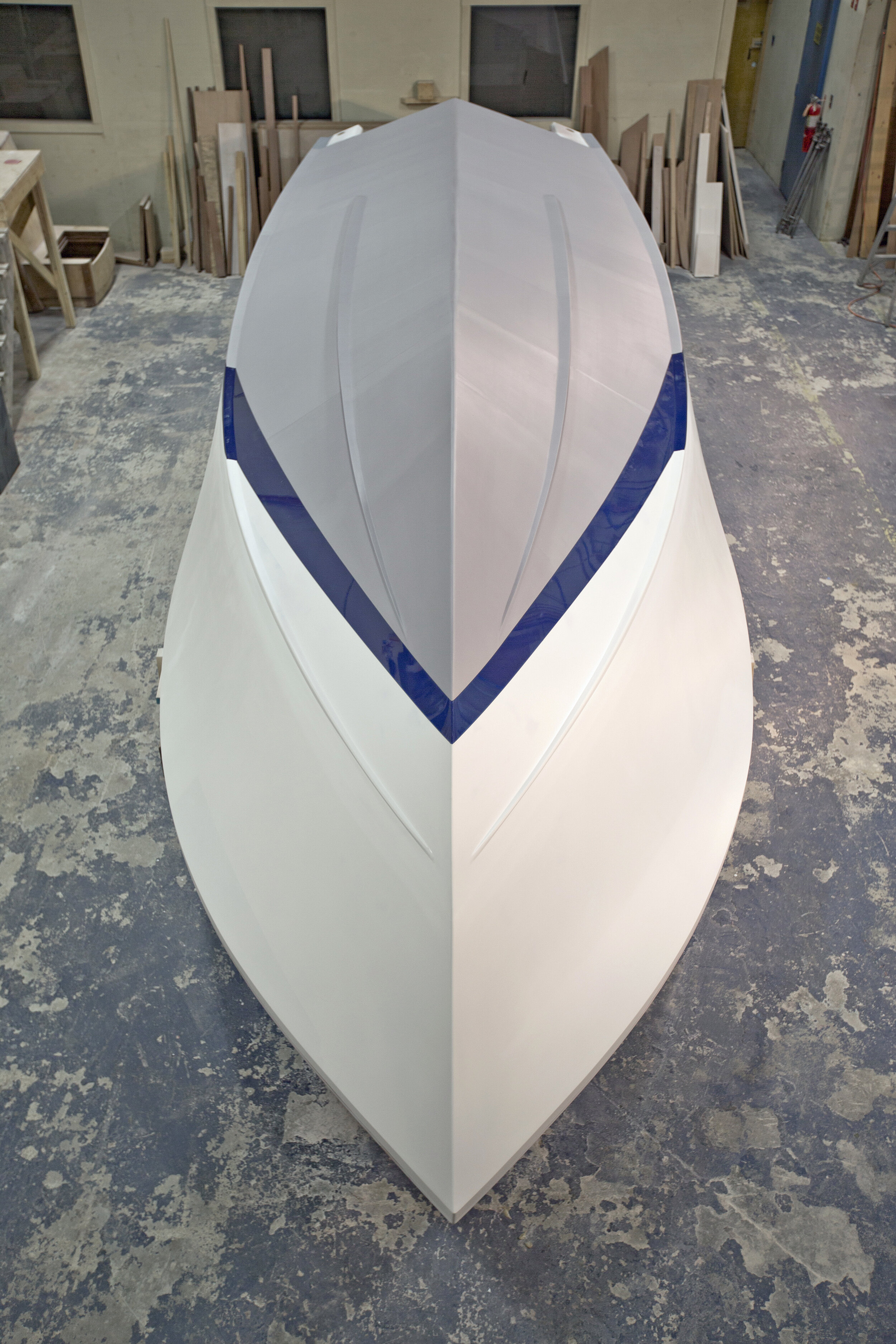FW 30
specifications
LOA: 31 ft 4 in
LOH: 29 ft 1 in
Beam: 9 ft 11 in
Draft in Operation: 32 in
Bridge Clearance: 7 ft 10 in
Displacement Wet: 7500 pounds
Hull Material cold molded
Propulsion: Twin Mercury 150 hp 4 stroke
Speed 43 mphTrimtabs: Custom Lectrotab
Electronics: Garmin
Fuel Capacity: 180 gallons
Water Capacity: 10 gallonsFeatures
The FW30 Sport Commuter combines many new features that will enhance comfort, safety, and usability for its owner and crew. Paramount in the design was egress from the boat to beach or boat to dockside facilities.The transom steps are perfect for stern access and for entering the water for swimming and diving. The boat also incorporates a soft rubber European sheer guard to protect the finishes of other yachts when coming alongside providing confidence and convenience to difficult docking situation.
Propulsion is provided by up to twin Mercury 300 hp outboards allowing performce up to 50 knots. Systems in the boat are more common to USCG-inspected boat standards than to typical recreational craft. These include access to all compartments, wiring, and plumbing (a bilge ventilation system), primary electrical cables that are contained in fire-resistant conduits, and a USCG gasoline tank installation.
CONSTRUcTION
Building lighter yet stronger hulls has been a primary goal at French & Webb. The FW30 Sport Commuter is built using composite techniques. The method used on the FW30 is advanced in its use of multiple layers.
Built with a composite wood core, sheathed in epoxyed e-glass and carbon, the structure’s weight-to-strength ratio is far better than in traditional fiberglass hulls. The hull bottom is also covered with a Kevlar-carbon fiber hybrid cloth and an additional e-glass layer, making it resistant to damage or puncture from grounding. Structure is built of full-length longitudinal girder system to support the loads of the fuel tank and cockpit deck. Carbon fiber has been applied to many deck and superstructure components to provide a weight-to-strength ratio similar to advanced aircraft. The FW30 meets ISO 12215-5 scantling rules, CE rules for category C operation, and all the ABYC guidelines.


















